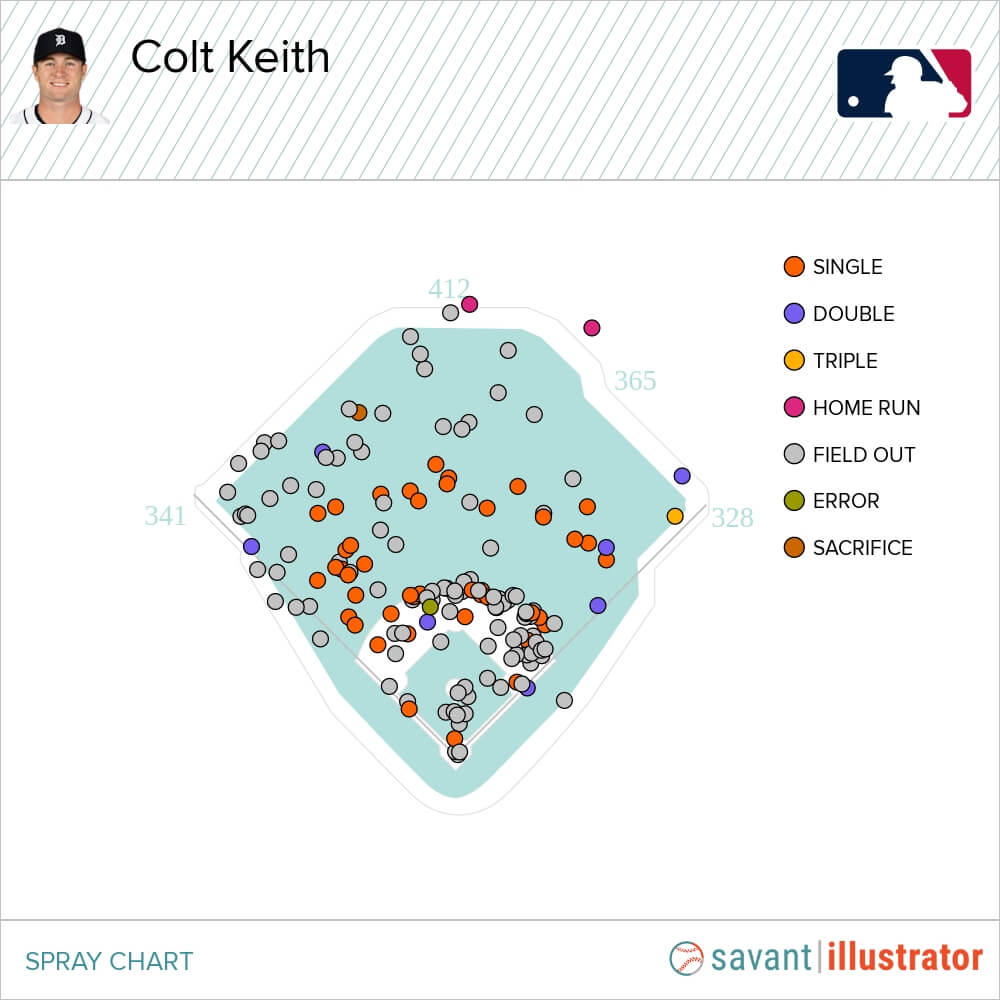
MILWAUKEE — Before Wednesday’s game, Tigers outfielder Riley Greene was bouncing around like his usual self.
“Today’s the day?” a reporter asked.
Greene played coy.
“The day for what?” he said.
Perhaps denial is a good medicine in a fickle, difficult game. Greene entered the day mired in a 1-for-28 slump. He had struck out 16 times in those at-bats. At the end of the previous series in Minnesota, Greene nursed his woes with a cold Coors Light but seemed determined to snap out of his cool spell.
Advertisement
“This is a hard game,” Greene said that afternoon. “Those guys on the other side get paid money to get us out. So it’s a hard game. You just show up every day with a smile on your face.”
Greene is a hitter with a track record and an All-Star appearance already under his belt at age 24. He has been through prolonged slumps at this level before, periods where he pulls his head toward the first-base dugout or gets antsy and begins chasing pitches and putting himself in a hole. He always eventually settles down and gets back to the basics.
Riley Greene has been prone to some brutal slumps throughout his short MLB career. The hope, though, is that these valleys will eventually smooth out. pic.twitter.com/ua19t2kDBE
— Cody Stavenhagen (@CodyStavenhagen) April 13, 2025
But the Tigers’ most recent series in Milwaukee did not prove to be an elixir for Greene’s struggles. Truth is the hardships grew worse. Greene went 0-for-12 and punched out eight times. In Tuesday’s loss, a game in which the Tigers mustered only one hit, Greene got ahead 2-0 against left-handed reliever Jared Koenig, then took three consecutive sinkers before returning to the dugout. Greene did not chase in that at bat, but he also did not swing. While losing patience tends to be one of his old flaws, his recent battle has been more perplexing.
“I’m missing fastballs right down the middle,” Greene said. “It just can’t happen.”
In his first at-bat Wednesday, he rolled over a first-pitch sinker with two men on base. In his second at-bat, he fouled off four pitches in the strike zone, then chased a slurve below the zone. In his third at-bat, he fouled tipped a center-cut, 89 mph sinker into the catcher’s mitt for the third strike.
Greene is now 1 for his past 32 with 18 strikeouts. Entering Wednesday, his in-zone contact rate was down noticeably from 80 percent last season to 70 percent so far this year. He is leading MLB in strikeouts. His 34.3 percent whiff rate ranked in the league’s bottom 11th percentile.
Advertisement
“It’s just piling up on him a little bit,” manager A.J. Hinch said. “I know he’s carrying the weight of the last at-bat into this at-bat. When a guy goes through these stretches, everybody looks for solutions, and he’s got a lot of people in his ear. We’re just trying to grind him through this a little bit and get him back to swinging at better pitches. He tried to be a little more patient today and then chased late in at-bats.”
The Tigers have plenty of good things going for them early in the season. But Wednesday they lost their first series since their season-opening sweep in Los Angeles. The team called upon Keider Montero for a glorified spot start as a means of creating extra rest for the remainder of its rotation. But while Montero fell victim to the home-run ball, his offense provided little spark. The Tigers were shut out Tuesday and scored only one run Wednesday. Detroit is still 10-8 despite Greene and Keith — two of its most important young hitters — battling the mental and physical tolls of slumps that have been too stubborn to end.
Greene holds himself to a high standard. He says he isn’t superstitious but has been known to switch bats or alter his walk-up song in effort to get going. Otherwise, he mostly keeps a positive demeanor.
Keith, however, has worn his early season troubles more visibly. After a difficult homestand in which he struggled at the plate and in the field, Keith admitted his confidence had reached a low point. In Minnesota, he connected for a couple of line-drive singles the other way, perhaps enough to give him a jolt. Keith singled up the middle Wednesday, raising his average to .192. He has drawn enough walks to post a respectable .354 on-base percentage, finding ways to contribute while clearly not at his best. The reality, though, is Keith is not connecting the way a hitter of his talent should be. Keith has struggled to lift the ball or tap into any pullside power. That creates a difficult balance, because sometimes trying to accomplish a specific result can only lead to more struggles.
“I’ve tried to just go up there and try to pull the ball,” Keith said Wednesday morning. “Usually that results in less success. Through the minor leagues I’ve always tried to hit line drives to left-center, and that allowed me to pull the ball the right way. Every time (I try to pull) I usually just strike out or ground out. … So I’m not going to fall into that trap. I’m going to keep trying to hit the ball to left-center. Then you start seeing the ball well. Then you can pull the ball the right way.”
Advertisement
For now, Keith ranks at the bottom of the league with an average exit velocity of only 80.9 mph. His bat speed is down from an average of 71.3 mph last year to 69.6 mph now. He’s yet to drive the ball with authority like he did during his hottest spell last season. In truth, Keith has struggled to pull the ball dating to last August, as shown below.

(Baseball Savant)
“Obsessing over it is a fine line if you’re in my shoes,” Hinch said earlier this season, “because I like to talk about what they’re actually doing as opposed to the idealism that it needs to be a certain way. I know he wants to hit more homers. Find me a hitter who doesn’t want to hit more homers. In order to (create power) you need to hit the ball in the air, specifically to the pull side. But what are you trading that off for? Is it tracking the ball, and all of a sudden the walks are down? That’s probably a net loss. It’s a balancing act.”
Like Greene, Keith has been through this before. Last season he hit .152 through his first 30 MLB games. He hit .285 from that point.
“I just got to keep working to keep getting it a tick more out front,” Keith said. “It seems like I’m getting pitches to hit and fouling them off. So just keep swinging at pitches I can do damage on, and try to get better on time.”
Baseball can create brutal cycles like this. Sometimes the harder you try to fight out of a hole, the deeper it gets. For now, Keith is taking his walks and slapping some singles, all while searching for the hitter he wants to be. Greene’s takes have looked awkward. Even when he has connected, he has not hit the ball hard. Despite his upbeat ways, Greene sat at his locker after Wednesday’s loss, staring deep into his phone, hardly moving.
The good hitters trust that the slumps will end. But that does not make it any easier to endure.
“It’s a vicious sport whenever you’re chasing something,” Hinch said of Greene. “Just seeing it piling up on him a little bit. He’s one good day from erasing a lot of this.”
(Photo: Gregory Shamus / Getty Images)
This news was originally published on this post .








Be the first to leave a comment